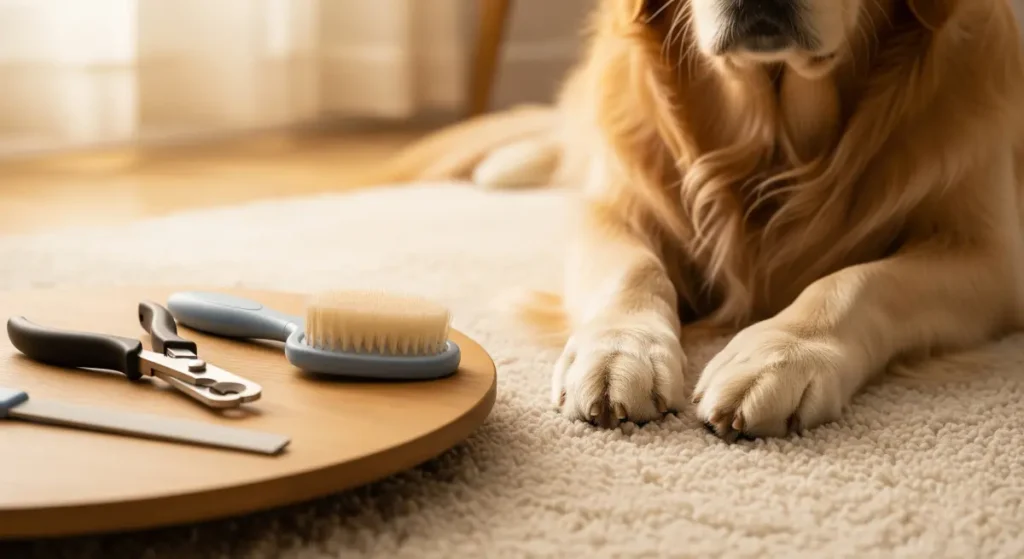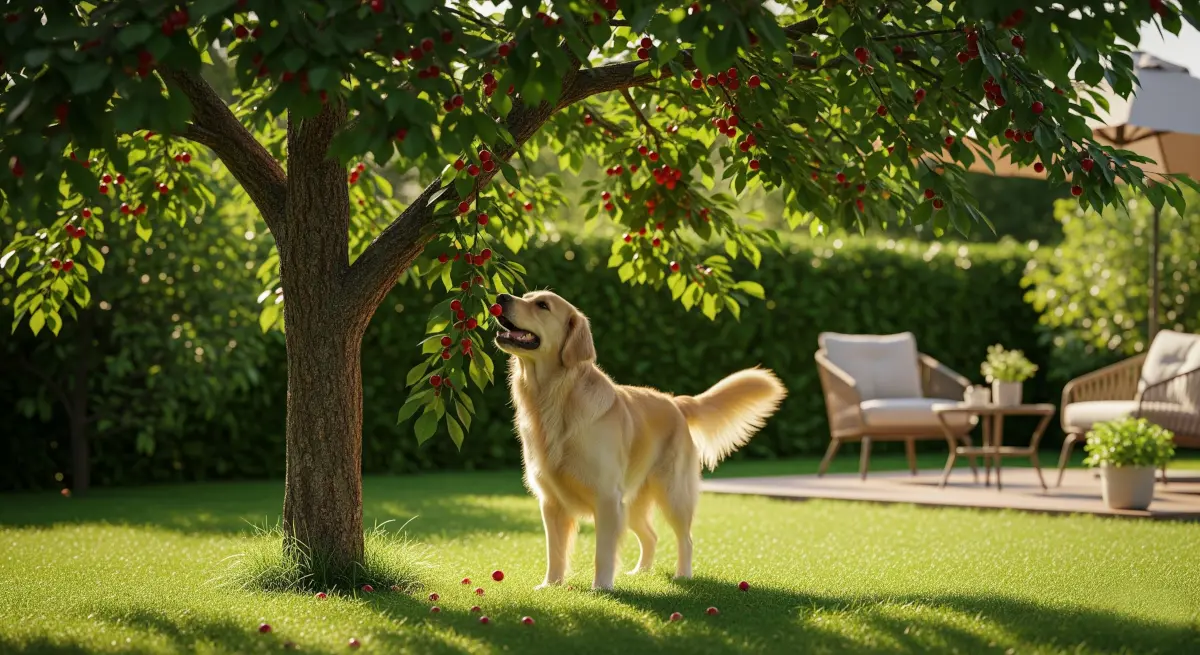Keeping your dog’s nails at the right length is crucial for their comfort, mobility, and overall health. If you’ve ever wondered how often to clip dog nails, you’re not alone—this is one of the most common questions among pet owners. The clicking sound of overgrown nails on your floor isn’t just annoying; it’s a clear sign that your furry friend needs immediate attention. Regular nail trimming prevents painful ingrown nails, improves your dog’s gait, and protects your furniture from scratches. In this comprehensive guide, we’ll explore the optimal trimming frequency for different dog types, safe cutting techniques, and practical tips to make nail care stress-free for both you and your pet.
Understanding Your Dog’s Nail Anatomy
Before diving into trimming schedules, it’s essential to understand what you’re working with when you cut dogs‘ nails. Your dog’s nails contain a living tissue called the “quick,” which houses blood vessels and nerves. This pink area is visible in light-colored nails but can be challenging to identify in darker ones. The quick grows alongside the nail, making regular trimming crucial to prevent it from extending too far.
When learning to properly trim dog nails, always remember that hitting the quick causes pain and bleeding. The good news is that with consistent trimming, you can actually train the quick to recede, making future nail care easier and safer.
General Nail Trimming Schedule
Most dogs need their nails trimmed every 3 to 6 weeks. However, this timeline varies significantly based on several factors. Active dogs who frequently walk on concrete or asphalt naturally wear down their nails, potentially needing trims only every 6-7 weeks. Conversely, indoor dogs or those with sedentary lifestyles typically require more frequent attention—approximately every 3-4 weeks.
The best indicator for how often you should trim dog nails is the sound test. If you hear clicking when your dog walks across hard surfaces, it’s time for a trim. Visually, nails should not extend beyond the paw pads when your dog is standing normally.
Breed and Size Considerations
Small and toy breeds often need more frequent nail trims because they tend to be less active and their nails grow faster relative to their body size. These dogs typically benefit from trimming every 3-4 weeks. Large breeds, especially those with active lifestyles, may only need trimming every 5-6 weeks due to natural wear patterns.
Working breeds and hunting dogs usually require less frequent trimming, as their active lifestyles naturally maintain nail length. However, even these athletic dogs need regular monitoring to ensure their nails don’t become overgrown during less active periods.
Age-Specific Trimming Schedules
Puppies require special attention when it comes to nail care. Their nails grow rapidly, and the quick can extend quickly if not managed properly. Trim puppy nails every 2-3 weeks to maintain proper length and prevent the quick from growing too long. This frequent trimming during puppyhood sets the foundation for easier nail care throughout their adult life.
Senior dogs often need more frequent nail trims, sometimes weekly, because reduced activity levels mean less natural wear. Additionally, older dogs may develop thicker, harder nails that may require professional attention. Monitor elderly dogs closely, as overgrown nails can significantly impact their mobility and comfort.
Safe Trimming Techniques
When determining how often to cut dog nails to shorten the quick, remember that gradual, frequent trims are more effective than infrequent deep cuts. For overgrown nails, trim small amounts every 1-2 weeks rather than attempting to cut them short in one session. This approach allows the quick to recede naturally without causing pain or bleeding.
Always use high-quality nail clippers designed for dogs, and cut at a 45-degree angle. Make clean, decisive cuts rather than crushing or splitting the nail. If you accidentally cut the quick, apply styptic powder immediately to stop bleeding. In emergencies, cornstarch or flour can serve as temporary alternatives.
Signs Your Dog Needs Nail Trimming
- Nails curve and touch the ground when standing
- Difficulty walking or altered gait
- Nails catching on carpet or fabric
- Visible extension beyond the paw pads
- Your dog favoring certain paws
Creating a Nail Care Routine
Consistency is key to successful nail maintenance. Mark your calendar with trimming dates based on your dog’s individual needs. Many pet owners find success combining nail trims with other grooming activities like baths or brushing sessions.
For anxious dogs, gradually introduce nail trimming through positive reinforcement. Start by simply handling paws, then progress to touching nails with clippers before actually cutting. This desensitization process makes regular trimming less stressful for everyone involved.
When to Seek Professional Help
Some situations warrant professional grooming or veterinary intervention. If your dog has severely overgrown nails, black nails where the quick is impossible to see, or extreme anxiety around nail trimming, consider professional services. Mobile groomers have become increasingly popular across the United States, offering convenient at-home services for busy pet owners.
Dogs with medical conditions affecting nail growth or structure should have their nail care supervised by a veterinarian. Certain medications and health issues can alter nail growth patterns, requiring adjusted trimming schedules.
Frequently Asked Questions
How do I know if I’m cutting my dog’s nails too often?
Over-trimming is rare but possible. Signs include excessive quick exposure, frequent bleeding, or your dog showing increased anxiety around nail care. If nails appear healthy and aren’t clicking on floors, you may be trimming too frequently. Most dogs benefit from the 3-6 week schedule, but adjust based on individual growth patterns.
Can I use human nail clippers on my dog?
While possible for very small dogs, human nail clippers aren’t ideal for canine nail care. Dog-specific clippers are designed to handle the thickness and shape of dog nails without crushing or splitting. Invest in quality pet nail clippers for safer, more effective trimming.
What should I do if my dog won’t let me trim their nails?
Start with desensitization training, gradually introducing your dog to paw handling and clippers. Use high-value treats and positive reinforcement. If anxiety persists, consider professional grooming services or ask your veterinarian about anti-anxiety options for grooming sessions.
Do outdoor dogs need nail trims as often as indoor dogs?
Generally, no. Outdoor dogs typically wear down their nails naturally through various activities and surfaces. However, they still need regular monitoring and occasional trimming. The frequency depends on their activity level and the surfaces they encounter daily.
Making Nail Care a Positive Experience
Regular nail maintenance doesn’t have to be a struggle. With the right knowledge about how often cut dog nails and proper techniques, you can keep your pet comfortable and healthy. Remember that consistency trumps perfection—frequent, gentle trims are better than infrequent, stressful sessions. Whether you choose to handle nail care yourself or rely on professional services, maintaining a regular schedule ensures your dog’s paws stay healthy and comfortable. Start implementing these guidelines today, and both you and your furry friend will appreciate the difference that proper nail care makes in their daily comfort and mobility.





